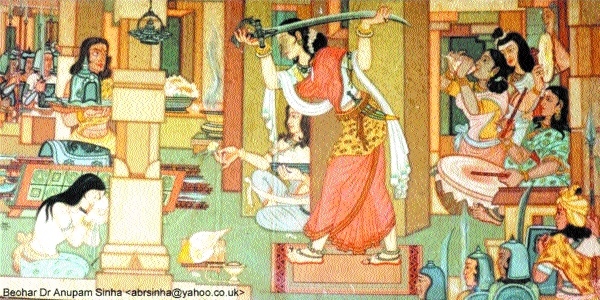Rani Durgavati’s valour needs to be popularised
Date :24-Jun-2020

First portrait of medieval Gondwana kingdom’s warrior sovereign Rani Durgawati in 1954 as fresco-secco in Shaheed Smarak concert hall Jabalpur by Beohar Rammanohar Sinha, the artist who illustrated the Constitution of India.
By Ashish Rajput :
Rani Durgawati’s 456th Martyrdom Day Today
Martyrdom of the queen of Gondwana kingdom, Veerangana Rani Durgavati is yet to get place in history books to make the new generation aware about the history of Gondwana era. She is remembered as the first Hindu woman warrior who proved her mettle against the British and Mughals and sacrificed her life to protect her motherland.
The land of Gondwana sovereign for which the queen sacrificed her life is losing the prominence of Gond people (indigenous domicile of Mahakoshal region). Even the remembrance of Gondwana queen is limited to specific date by the Government and the community as well.Dilapidated condition of relics belonging to Rani Durgavati era mirrors the seriousness of the Government and other competent agencies for protecting the historic evidences of golden era of Gondwanadynasty. Another disappointing fact is that the name of Gondwana Queen Durgavati is limited only with major landmarks of the city but the story of her bravery could not get place in the academics being taught to new generation.
The people remembered Rani Durgavati through a university, a hospital, a museum, a pond and Madan Mahal fort, the Samadhi Sthal (grave). Rani Durgavati was sensitive towards protection of environment and water conservation. Water management and ground water recharging system of Gondwana kingdom in a natural way is still ensuring availability of water in Jabalpur. Three ponds named Sangram Sagar, Devtal and Supatal are the best example of water harvesting and ground water recharging technology.